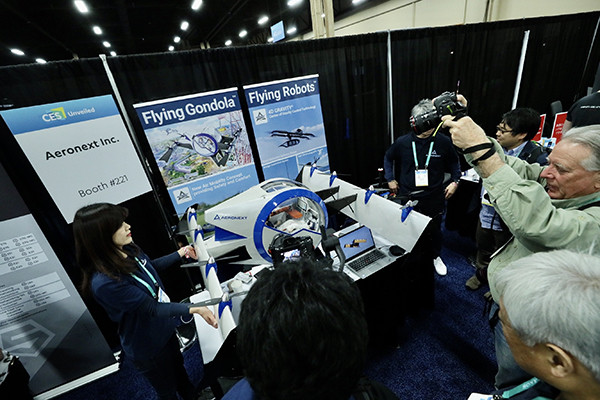CES 2020 Highlights: Toyota showcases humanoid robot, Siemens incorporates ARM into PAVE360, HP releases laptop made from ocean-bound plastic
News from the Consumer Electronics Show (CES) 2020

At CES2020, attendees explore the products in the exhibit booths. Photo courtesy of Consumer Technology Association (CTA).
January 9, 2020
This week, in Las Vegas, tech leaders, pioneers, and enthusiasts come together to explore the latest in consumer technology, at the annual CES, or consumer electronics show.
Exhibitors showoff connected devices, autonomous vehicle-related technologies, smart home systems, ARVR (augmented reality, virtual reality) systems, and AI-powered consumer gadgets.
Toyota and NVIDIA
At the show, Toyota’s booth showcases the T-HR3 humanoid partner robot. The robot is controlled by a human driver, whose movements dictate the robot's action.
GPU maker NVIDIA plays a role in the development of T-HR3. Its Isaac software development kit for AI-driven robotics—a technology for training and simulating robots—is part of the project.
AMD with mobile processors
Another GPU maker, AMD, promoted its processors, targeting mobile computers. The company unveiled what it calls “the world’s first 7nm high-performance CPUs and GPUs.” The product line includes the Ryzen 4000 mobile processors with Zen 2 architecture. The U series is meant for ultra-thin laptops; the H series targets gamers and consumers; and the Pro series is for commercial laptops.
Siemens and ARM
At the show, Siemens also announced its partnership with ARM, a processor IP firm.
The company plans to incorporate ARM Automotive Enhanced products in Siemens’ PAVE360, described as a “pre-silicon autonomous validation environment.” The two firms expect to reach automotive manufacturers using sensors.
The resulting integrated circuited boards (ICs), according to Siemens, will let you “simulate and verify sub-system and system on chip (SoC) designs, and better understand how they perform within a vehicle design from the silicon level up, long before the vehicle is built.”
HP introduces new systems
HP is showcasing the HP Envy 32 all-in-one, a personal system powered by Intel Core i CPUs and NVIDIA GeForce GPUs.
It’s also highlighting the HP Elite Dragonfly, a thin, light mobile system with 5G connection. More than 82% of its parts are made from recycled materials, and it is the first laptop made with ocean-bound plastic, so the company hopes it will appeal to eco-conscious consumers.
More AMD Coverage

More Hewlett Packard Coverage
More NVIDIA Coverage
More Siemens Digital Industries Software Coverage
Subscribe to our FREE magazine, FREE email newsletters or both!
About the Author
Kenneth Wong is Digital Engineering’s resident blogger and senior editor. Email him at [email protected] or share your thoughts on this article at digitaleng.news/facebook.
Follow DERelated Topics







